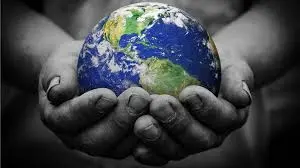Eco-Conscious Fashion Choices for a Greener Future On Earth Day
22/04/2024 2024-04-22 15:20Eco-Conscious Fashion Choices for a Greener Future On Earth Day
Eco-conscious choices in fashion are something that all of us need to work on for a greener and better planet. One thing that we see in the fashion industry is that things have changed a lot during the last decade, and this has led to another way of making apparel, which is called eco-conscious fashion.
A key change agent in a sector with a notoriously huge ecological and social footprint is eco-conscious fashion designers.
This article provides insight into the multidimensional world of eco-conscious fashion design and eco-conscious designers, focusing on its core values, technical know-how, and powerful results for the entire fashion community.
Take this trip with us through some of the most important aspects of what makes up a eco conscious approach to designing clothes giving rise to a greener, fairer, and more flexible future for fashion.
Eco-conscious Fashion Design?

Harvard business review
Fashion done in a way that is eco conscious in terms of environment and society is referred to as eco-consious fashion design. Eco-conscious designers cover different guiding principles aimed at mitigating the negative impacts of this industry on the earth and humans while also advocating for ethical practices across its value chain.
The salient features of eco-conscious fashion design are:
 Sg T Group
Sg T Group
1. Material:
These may involve materials such as organic cotton, hemp, bamboo, and recycled fabrics among other eco conscious alternatives. Avoiding non-renewable resource-based materials or those involving chemicals detrimental to health during their production.
2. Production Processes:
Eco-friendly methods such as energy savings, lower water demand, and less waste generation should be used for production purposes. These can encompass techniques like zero-waste pattern cutting, digital printing, and innovative dyeing processes that cause the least pollution.
3. Fair Labour Practices:
This means ensuring fair working conditions for workers involved in garment making throughout the supply chain, including good pay, reasonable hours of work, and respect for labour rights. To achieve this, fashion brands must openly reveal their sourcing and manufacturing practices.
4. Longevity & Durability
Design clothing made from quality materials using high standards of construction, thus promoting durability and longevity. Thus there will be no need to frequently change clothes due to tear or wear hence resulting in reduced textile waste.
5. Circular Economy
By designing products with end-of-life considerations like recyclability, biodegradability or reparability, reusability/up-cycling, etc., eco conscious luxury brands thus embrace circular economy principles.
Eco- conscious fashion labels are an attempt to create a more ethical and environmentally friendly fashion industry that values people as well as the planet.
Why is Eco-conscious Fashion Important?

Asia pacific rayon
Eco-conscious fashion, in essence, involves a transformation vision for the fashion industry that goes beyond merely following trends and embraces a holistic model for design, production, and consumption.
The importance of eco-conscious fashion can be described through these points:
1. Environmental Impact:
It is widely known that the fashion industry has considerably negative effects on the environment, including pollution, depletion of resources, and extinction of habitats.
On the other hand, eco conscious fashion aims to reduce its impacts by using biodegradable materials, minimising energy and water use as well as incorporating recycling and waste reduction measures in its circular production system.
Through mitigating the environmental impact of fashion, eco conscious luxury brands help to preserve ecosystems and natural resources for future generations.
2. Social Responsibility:
The garment sector has been accused of violating labour rights in different parts of the world with unsafe working conditions while exploiting workers, mostly in developing countries.
eco-consious fashion prioritises fair labour, including ethical treatment, payment of fair wages, and provision of safe working conditions to all individuals involved throughout its value chain.
This enhances equity in society and promotes worker welfare; hence it helps marginalized communities, which are usually adversely affected by fast fashion and its negative consequences.
3. Ethical Consumerism:
eco conscious brands prompt consumers to make more informed choices concerning their clothes by being responsible customers when purchasing clothes. Making people aware of the socio-environmental impact of clothing purchases, enables them to prefer companies that emphasize sustainability as well as ethics within their operation.
This move towards conscious buying spurs responsibility inside the clothing industry thereby promoting demand for accountable supply chains.
Generally speaking, eco-conscious fashion labels support a more just fashion sector environmentally protective and flexible enough to serve current populations today while preserving the earth’s natural capital for posterity.
Eco-Friendly Fashion Materials
There are several eco-friendly fashion materials that designers and brands can use to reduce the environmental impact of their products. Among the materials eco conscious brands can use are:
1. Hemp:
Hemp is a versatile, eco-conscious fiber that requires minimal water and no pesticides when growing. It is also known for its robustness and biodegradability, hence it serves as an alternative to conventional textiles.
2. Bamboo:
Bamboo is a quick-growing renewable resource that needs little water and no pesticides during cultivation. Soft, breathable, antibacterial natural bamboo fabric is good for many types of clothing items.
3. Tencel (Lyocell):
Tencel is a eco-conscious fabric derived from wood pulp mostly obtained from eucalyptus or bamboo trees. Thus produced through closed-loop processes that recycle solvents and minimize waste, it is environmentally friendly and biodegradable.
4. Recycled Polyester:
Recycled polyester originates from post-consumer PET bottles or recycled polyester fabric scraps. Recycled polyester helps conserve resources and lower greenhouse gas emissions by diverting waste from landfills and reducing demand for virgin polyester.
5. Piñatex (Pineapple Leather):
Piñatex is a pineapple leaf fibers-based leather alternative made in an environment-friendly way without cruelty associated with traditional leather production methods. It uses agricultural waste and requires less water usage, and chemicals to produce making it an ethical option for leather goods.
6. Cork:
Cork comes from the bark of cork oak trees making it renewable as well as biodegradable material. This makes it amenable to decorations such as bags, wallets, and shoes among others due to its lightweight nature besides being durable against water effects.
7. Soy Silk:
Soy silk or soybean fiber which results from the by-products of soybean processing has the same properties although it has a different texture since this type of silk does not take much energy hence water to be produced as ordinary silk does.
By incorporating these eco-friendly materials into their designs, fashion brands can reduce their environmental footprint and promote more eco conscious practices within the industry.
Impact of eco conscious Fashion Design on The Industry
Sustainability was a central focus for the fashion industry in 2024 as it strove to reduce environmental impact and improve social conditions. Some key developments and trends that have been identified leading to positive change in the industry.
1. Innovations and Technologies:
For instance, when it comes to new materials and recycling technologies, sustainability is now linked with innovation. However, there remains a challenge in providing hard evidence of their environmental benefits.
For example, traceability technology in supply chains like digital IDs for materials and goods has allowed transparency which helps brands uncover and address social or environmental risks.
Furthermore, innovations such as AI-powered recycling solutions for blended fibers and plastic-free leather alternatives hold promise for reducing the industry’s environmental footprint (Good On You).
2. Circular Economy and eco conscious Practices:
Increasingly, a circular economy approach recognizes eco conscious fashion that considers the whole lifecycle of a garment; durability in design, promoting recycling & reusing as well as using digital tools to enhance sustainability throughout the whole fashion sector are some of its components.
As an illustration at the design stage circular design principles are being embedded so that garments can be easily recycled. Also emerging are new models of business such as clothing rental services aimed at extending product life spans and minimizing waste.
3. Impact and Challenges:
The Fashion Industry faces significant challenges including raw materials causing Scope 3 emissions dependency, intensive water usage along energy consumption among others, while pollution occurs during the end-of-life phase of clothing items.
Annually, 98 million tonnes of non-renewable resources are used up by this sector plus 93 billion cubic meters of water resulting in 2% global greenhouse gas emissions (McKinsey & Company).
Addressing these challenges of sustainability in fashion design will require more than just raising consumer awareness; instead, the approaches through which fashion designers think about their products should be changed from the beginning until they reach an end- point.
Not only is eco conscious fashion moving toward an environmentally conscious society and a more basic social need but also it’s an opportunity for innovation and connection with emerging consumers of this industry. As the fashion industry continues to adapt and evolve, these endeavors might potentially lead to a more eco conscious and profitable future.
Conclusion
Developing eco conscious fashion design is a time of creative solutions, accountability, and coordination.
The sector should also be environmentally friendly to secure its existence for the next generation as the industry faces the environmental and social demands of our times.
Sustainability in fashion design means that if all actors along the fashion value chain collaborate they can make sure that such a situation arises where the fashion industry turns out beautiful and novel designs but at the same time is not unethical inclusive or irresponsibly disposed to the environment.
Frequently Asked Questions (FAQs)
- What is eco conscious fashion design?
eco conscious fashion design prioritizes environmentally and socially responsible practices throughout the fashion industry, including material sourcing, production processes, and labor conditions, to minimize negative impacts on the planet and people.
- Why is Eco-consious fashion important?
eco conscious fashion is crucial for mitigating the fashion industry’s environmental footprint, promoting fair labor practices, and fostering ethical consumerism, thus contributing to a more equitable, environmentally conscious, and resilient future.
- What are the challenges of eco-conscious fashion?
Challenges of eco conscious fashion include resource constraints, systemic barriers, and the need for industry-wide collaboration and innovation to address environmental, social, and economic complexities effectively.













